Do you have a question about the YASKAWA Motoman DX200 and is the answer not in the manual?
Explains the meaning of safety notations like DANGER, WARNING, CAUTION, MANDATORY, PROHIBITED.
Defines MOTOMAN as a Yaskawa robot product and lists its main components.
Specifies how equipment like DX200 controller and programming pendant are designated.
Explains notation for keys, buttons, and displays on the programming pendant.
States that trademark indications are omitted for company and product names.
Provides general tips for safe operation, emphasizing trained personnel.
Lists standard mechanical safety equipment provided with the system.
Specifies safety precautions for performing maintenance procedures.
Summarizes the importance of following manual instructions and precautions.
Provides phone number and email for Yaskawa Customer Support.
Lists essential system information to have ready before contacting support.
Explains the basic concept and types of conveyor synchronized motion control.
Details the Start Shift function for managing workpiece positions without home-position limit switch.
Describes the WORK ID Shift function for managing workpiece identification.
Explains the WORK IN/NOT Shift function for detecting workpiece presence.
Highlights important precautions when using conveyor shift functions.
Details the setup of the conveyor condition file and supplemental files.
Provides steps for editing various parameters within the conveyor condition file.
Explains how to set the conveyor resolution for accurate positional conversion.
Describes the detection function for broken line status (conveyor pulse).
Introduces supplemental files like START SHIFT, WORK ID, and WORK IN/NOT.
Details the parameters for the Start Shift condition file.
Provides steps for editing the start shift condition file.
Details the parameters for the WORK ID SHIFT condition file.
Provides steps for editing the WORK ID shift condition file.
Details the parameters for the WORK IN/NOT SHIFT condition file.
Provides steps for editing the WORK IN/NOT shift condition file.
Explains how to register instructions in teach mode.
Details the SYSTART instruction for starting conveyor synchronized control.
Details the SYEND instruction for ending conveyor synchronized control.
Describes SYMOVJ, SYMOVL, SYMOVC instructions for synchronized motion.
Explains the CVQUE instruction for switching reference workpieces.
Details switching interpolation modes for synchronized move instructions.
Explains manipulator motion speed in conveyor synchronized operation.
Describes how manipulator wrist posture is maintained during synchronized motion.
Provides guidance on teaching circular steps for synchronized motion.
Explains how conveyor positions are registered during the teaching process.
Details how to perform teaching after synchronized motion is interrupted.
Highlights restrictions and important notes for conveyor synchronized operations.
Provides practical examples of jobs for conveyor synchronized functions.
Explains how to manually set conveyor positions without moving the conveyor.
Describes how to perform test runs using a virtual encoder.
Explains how to manually turn ON the conveyor home-position limit switch.
Describes manipulator reaction based on conveyor speed changes.
Discusses factors affecting accuracy in conveyor synchronized operations.
Explains how conveyor resolution errors impact synchronization.
Details how synchronized motion restarts after manipulator stops.
Describes how synchronized status is maintained during operation.
Explains how parallel shift status is maintained or cleared.
Describes manipulator motion during TIMER and WAIT instructions.
Details detection of workpieces exceeding the maximum position limit.
Provides an overview of the CV (SYNCHRONIZATION) monitor display.
Displays the status and data related to the CV START SHIFT function.
Displays the status and data related to the CV WORK ID SHIFT function.
Displays the status and data related to the CV WORK IN/NOT SHIFT function.
Provides an overview of the CV SHIFT MONITOR display.
Reference for the SYSTART instruction parameters and function.
Reference for SYMOV instructions for synchronized motion.
Reference for the SYEND instruction parameters and function.
Reference for the CVQUE instruction parameters and function.
Reference for the GETCVSFT instruction parameters and function.
Lists and describes specific input signals for conveyor control.
Lists and describes specific output signals for conveyor control.
| Model | DX200 |
|---|---|
| Category | Controller |
| Programming Language | INFORM III |
| Weight | Approx. 60 kg |
| Mounting | Floor-standing |
| Protection Class | IP20 |
| Safety Standard | ISO 10218-1 |
| Communication Protocols | Ethernet/IP, DeviceNet, PROFIBUS, EtherCAT |
| Power Supply | 200-220VAC, 50/60Hz, 3-phase |
| Control Method | Servo control |
| Operating Temperature | 0°C to +45°C |
| Number of Axes | Up to 8 axes (7 robot axes + 1 external axis) |
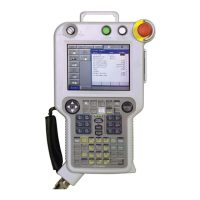
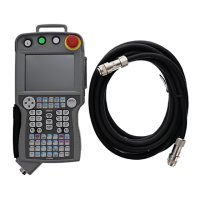
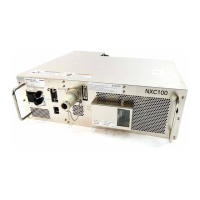
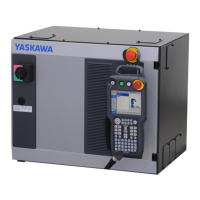
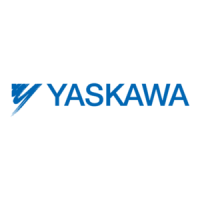
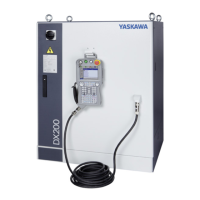
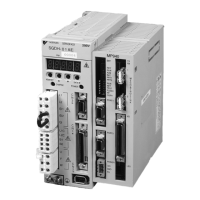

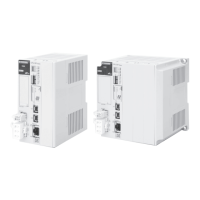
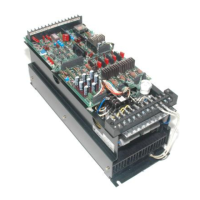


